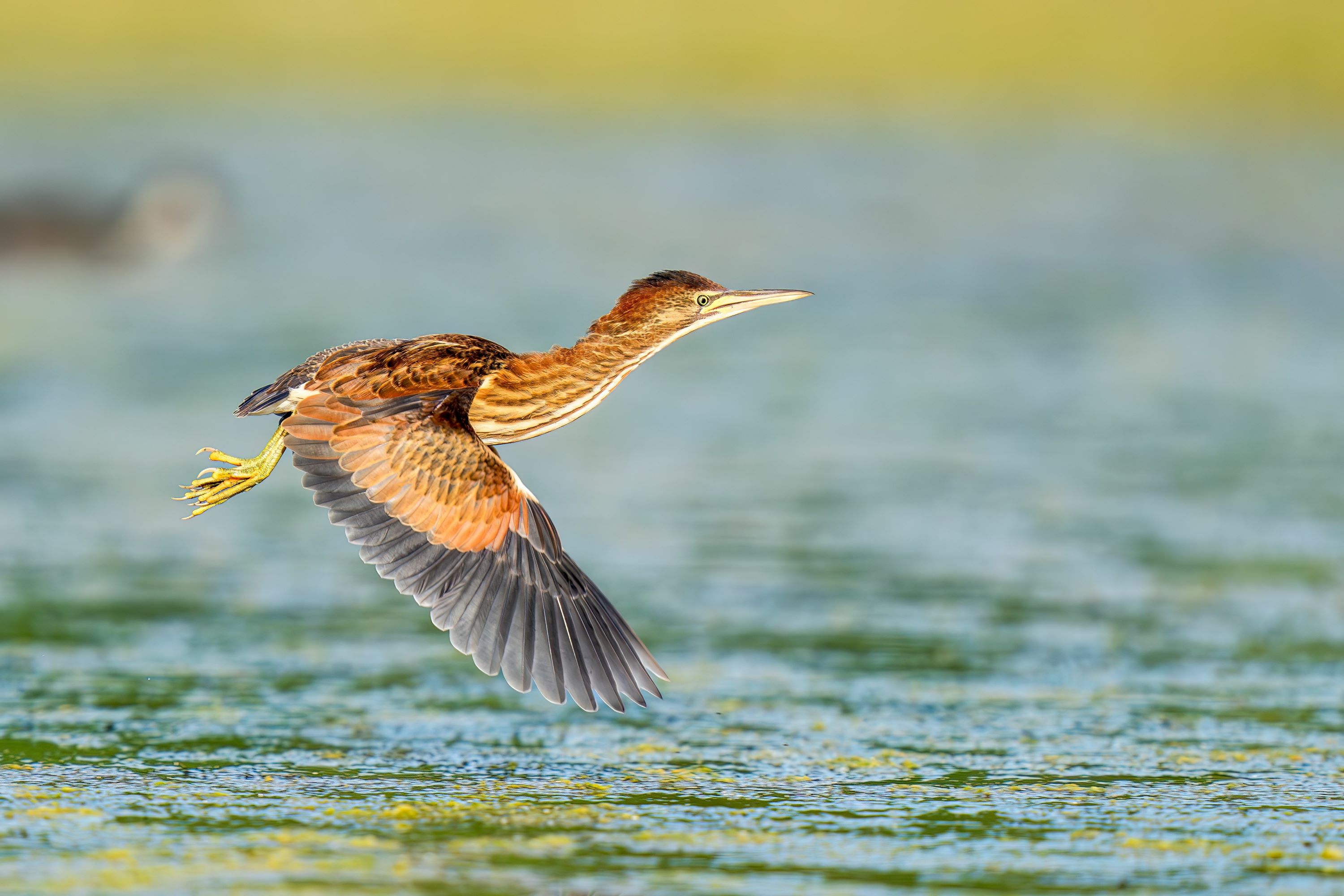
Yellow Bittern: The Elusive Marshland Inhabitant
Introduction to the Yellow Bittern
The Yellow Bittern, Ixobrychus sinensis, is a small heron species known for its striking yellow-brown plumage and secretive lifestyle. Belonging to the family Ardeidae, this bird is a frequent inhabitant of the marshy wetlands of Asia, where it skillfully blends into its surroundings.
Physical Description
The Yellow Bittern measures about 38 to 58 cm in length, making it one of the smaller members of the heron family. It features a slender build with a yellow-brown plumage that provides excellent camouflage in the reeds and vegetation of its habitat. The male exhibits brighter coloring than the female, with more vivid yellow tones on the head and neck.
Habitat and Distribution
Native to Asia, the Yellow Bittern's range extends from India and Sri Lanka to China, Japan, Southeast Asia, and the Philippines. It prefers freshwater wetlands such as marshes, swamps, and paddy fields, thriving in areas with dense vegetation.
Behavior and Lifestyle
This bittern is known for its elusive nature, often remaining hidden among tall reeds and grasses. It is most active during dawn and dusk but can occasionally be seen foraging during the day. The Yellow Bittern's ability to remain motionless and blend into its environment makes it a challenge to spot.
Feeding Habits
Its diet primarily consists of small fish, amphibians, and insects. The Yellow Bittern employs a 'stand and wait' hunting strategy, capturing prey with quick strikes using its sharp bill.
Breeding and Nesting Habits
Breeding usually occurs in the monsoon season. The Yellow Bittern nests in dense vegetation, often building its nest close to the water. The nest is a platform made from reeds and other aquatic plants.
Egg Laying and Incubation
The female lays a clutch of 4 to 6 eggs, which are pale blue or green. Incubation is predominantly undertaken by the female and lasts about 18-20 days.
Chick Rearing and Parental Care
Chicks are altricial and depend heavily on their parents for food and protection. They grow quickly and start exploring their surroundings within a few weeks, although they remain close to the nest for additional parental care.
Vocalizations and Communication
The Yellow Bittern is relatively quiet but can produce a variety of soft calls, especially during the breeding season. These calls are used for communication between mates and signaling alarm.
Conservation Status
Currently listed as Least Concern by the IUCN, the Yellow Bittern faces threats from habitat loss and degradation, particularly in the draining and pollution of wetlands. Conservation efforts are crucial for preserving these vital habitats.
Similar Species and Taxonomy
Part of the order Pelecaniformes, the Yellow Bittern belongs to the genus Ixobrychus, which includes other small heron species. It shares habitat preferences and behaviors with its Ixobrychus relatives but is distinguishable by its yellow-brown plumage and Asian distribution.
The Yellow Bittern in Utah
The Yellow Bittern is not found in Utah or North America, as its habitat is confined to Asia. Birdwatchers in Utah can observe other Ardeidae family members, such as the American Bittern, in suitable wetland habitats.
Conclusion
The Yellow Bittern, Ixobrychus sinensis, is a noteworthy bird that adds to the rich tapestry of Asian wetland ecosystems. Its secretive behavior, specialized habitat preferences, and striking appearance make it an intriguing species within the heron family. The conservation of wetland habitats is essential for the survival of the Yellow Bittern and underscores the global importance of wetland conservation efforts.